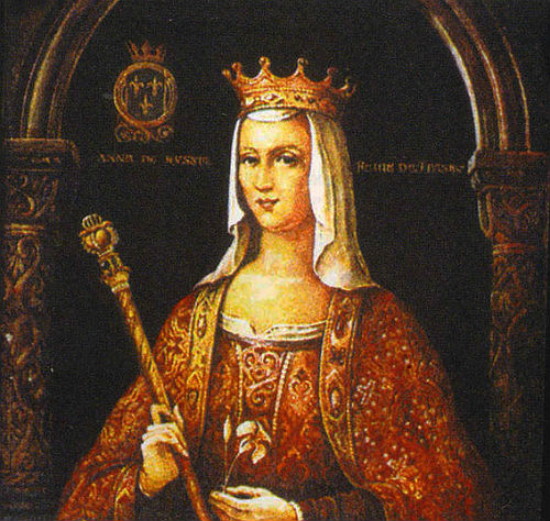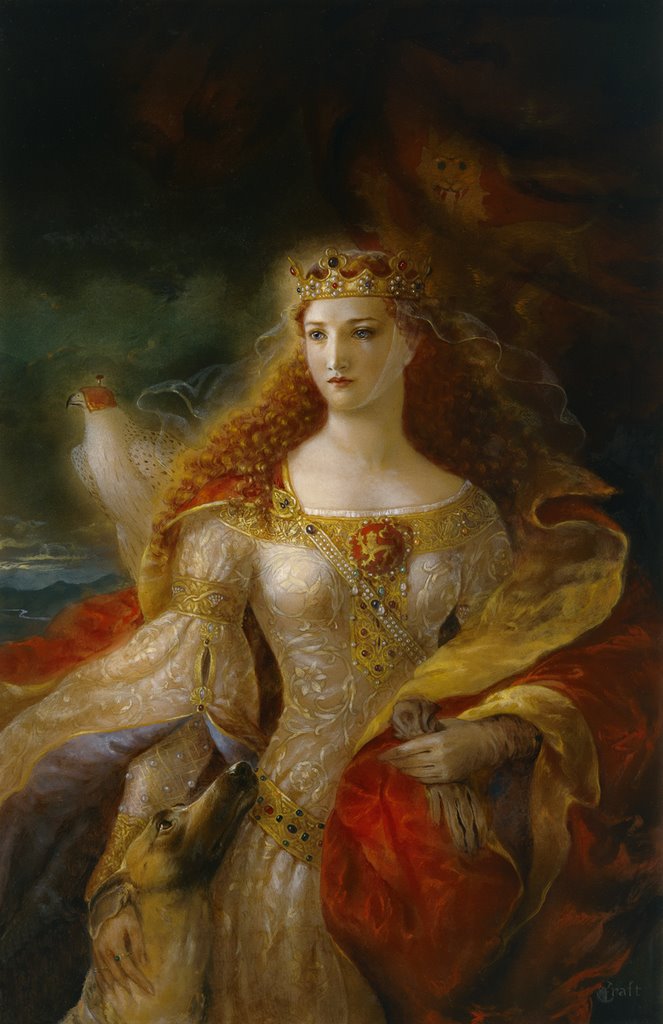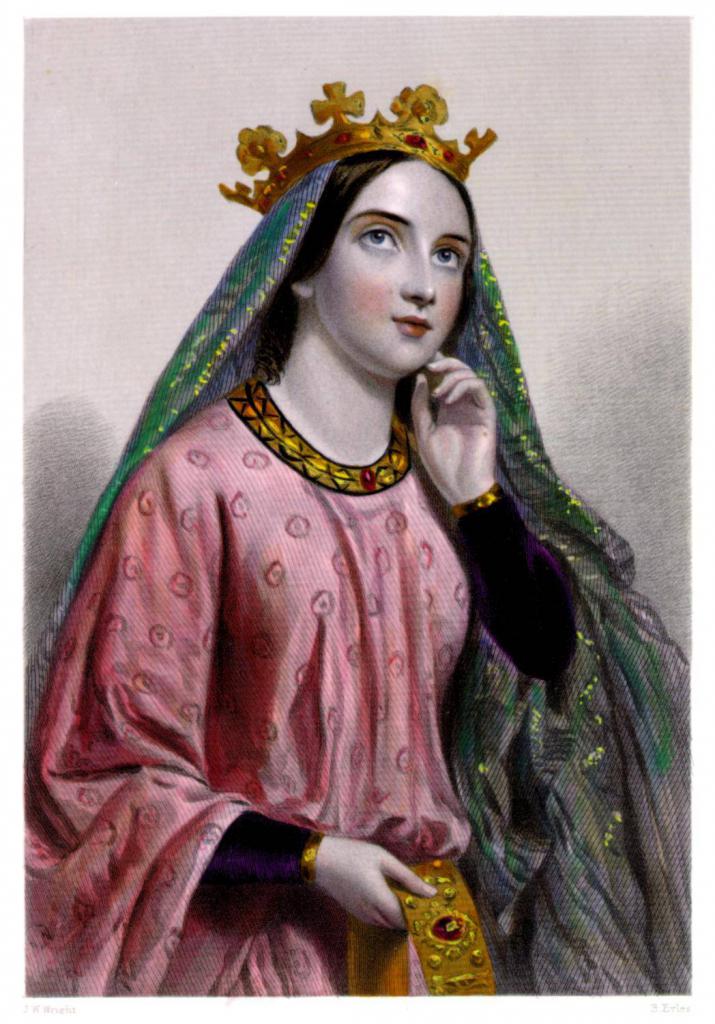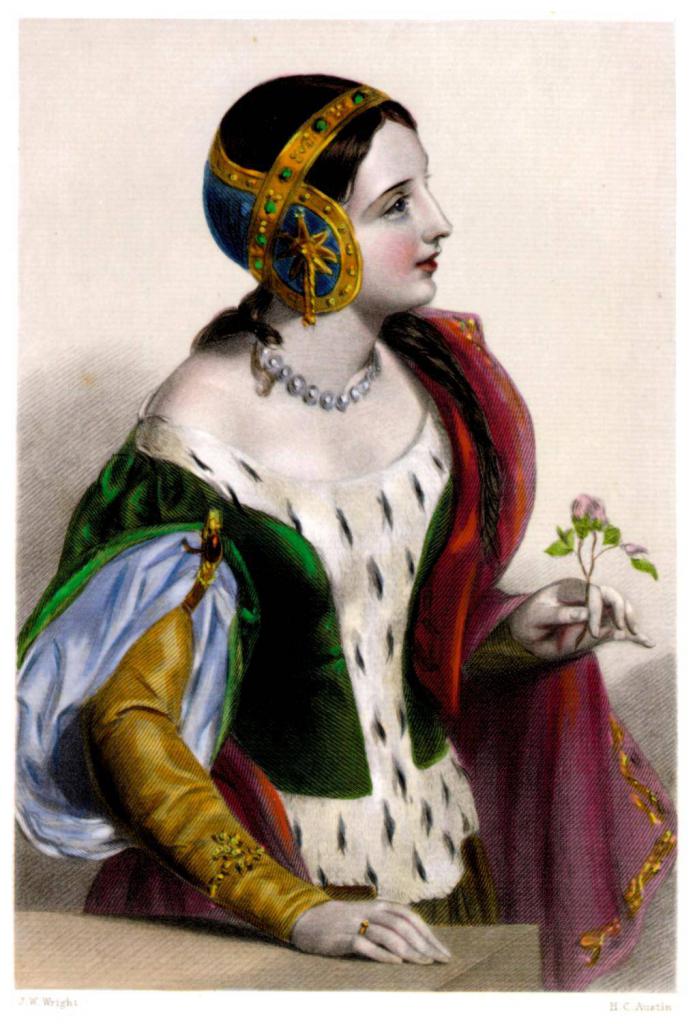Throughout history, there have been many women who have left their mark on the history of a country. They participated in various government affairs, coups, battles, ruled the country, gave birth to future kings. Women of the Middle Ages also apply to them. What is this period, the Middle Ages? What great and famous ladies and ladies lived during this period of human history?
Age of the Middle Ages
Under this era, it is considered to be the period of the history of the countries of Europe and Middle Asia, between antiquity and the period of the New Time. The beginning is considered to be the fall in 476 AD of the Roman Empire. And the end of this era is considered the XV century, although it stands out even later than the Middle Ages, which ends in the XVI century. During this period, events such as the formation of barbarian states, the Byzantine Empire, Kievan Rus, the Frankish kingdom, the Arab conquests and the Crusades, the Hundred Years War, the conquests of the Ottoman Empire, the Reformation and others took place. The Middle Ages left a large and noticeable mark in architecture, art, literature, and science. And in our time, historians are researching various issues, for example, how women dressed in the Middle Ages, what they ate and what people did. It was a difficult period in which women played a big role. Some of them will be discussed later.
Grand Duchess of Kievan Rus
Princess Olga, who was probably born at the end of the 9th century, was the wife of Prince Igor Rurikovich. Her husband died in 945, after which Olga was in power until her death. The reason for this is the small age of the heir to the throne of Svyatoslav. Yes, and after he became ruler, Olga remained in power, because Svyatoslav was engaged mainly in military campaigns.
Having avenged the Drevlyans for the death of her husband and burning their city Iskorosten, Olga went to Novgorod and Pskov lands to collect tribute. It was she who set up the tax collection system, which began to strengthen the power of Kievan Rus. During Olga's life, stone urban planning begins. For her, some stone buildings were built in Kiev. The princess is one of the first to adopt Christianity in Russia. This, of course, left a mark in the life of her grandson, the future Prince Vladimir. Olga died in 969, at the age of about 80, playing a large role in the formation of the Russian state.
The youngest daughter of Prince Yaroslav the Wise
Anna Yaroslavna was the third daughter of Yaroslav. Her birth year is not exactly known, between 1024 and 1036. As one of the outstanding women of the Middle Ages, Anna received an excellent education, fenced well and rode a horse, not inferior in this to her brothers. In 1051, her life changed dramatically - she marries Henry I, the French king. Life in France, according to her, she does not like in comparison with Kiev.

A year later, she gave birth to the king of the heir to Philip, who later became king of France. Anna devoted herself entirely to the education of Philip and the other children whom she later gave birth to, as well as to state affairs. Henry I trusted his wife very much. She even left her signature next to the king's signature on government documents and decrees. After the death of the king in 1060, Anna continues to conduct state affairs, although another person was appointed guardian of Philip. A few years later, one story occurs with Anna - she begins to live with Count Raul, married to another woman whom he expelled. After going through certain difficulties, they become legal spouses. But in 1074, Anna again became a widow, returned to her son’s court and again participated in state affairs. Little is known about the end of her life. There is a version that she returned home to Kiev. Anna Yaroslavna can be called one of the most beautiful women of the Middle Ages.
Grandmother of medieval Europe
Another famous and great woman who left her mark on history is the owner of the Duchy of Aquitaine. In history, she is known as Eleanor. She was probably born in 1122. At 15, she became the Duchess of Eleanor of Aquitaine. Her guardian was the king of France himself, who married her son Louis. After the death of Louis VI, she becomes queen of France. But at 30, Eleanor divorces King Louis VII, leaving him two daughters. However, her possessions were preserved behind her.

Soon Eleanor of Aquitaine married Earl Henry, who soon became King of England Henry II. Probably due to the fact that the Aquitaine lands were taken over by England, a war was subsequently launched. From marriage to Henry, she had five sons. Among them are two future kings - Richard, known as the Lionheart, and John Landless. Eleanor rebelled with her sons in the struggle for the throne, but was soon imprisoned by King Henry for 16 years. Richard returns her freedom, and Eleanor leaves for France, where he dies in 1204 at the age of about 80 years.
King's wife with a lion heart
Berengaria of Navarre was the daughter of King of Navarre Sancho VI. She was born in about 1165-1170. With Richard, then still a count, she met at a knightly tournament, to which he was invited by the brother of Berengaria Sancho VII. In 1190, Richard begins to plan a wedding with Berengaria. He entrusts the negotiations with his mother Eleanor. This marriage was beneficial for the owner of Aquitaine. In order to get married, Richard had to break off the engagement with Adele, sister of the French king Philip II, which led to a conflict. In the end, he was left alone, allowing him to marry anyone. But here a new difficulty arises.

Richard goes on a crusade, and Berengaria of Navarre has to join him. During the voyage, some adventures await them - the ship of Berengaria crashes near Cyprus, Richard saves his sister and bride, capturing Cyprus. Here, in Cyprus, in 1191, Berengaria became Queen of England and wife of Richard. Then she returns to Poitou, remaining in the shadow of Eleanor. They rarely saw King Richard, relations were strained. After the death of the king in 1195, Berengaria never married, remaining the dowager queen, who had never stepped on English soil. She died in 1230. Her image left a mark in literature and cinema.
Collector queen
Not much is known about the life of Clementia of Hungary. She was the daughter of Karl of Anjou, who bore the title of Hungarian king. Clementia was born in 1293, and in 1315 she married King Louis of Louis of Navarre and France. But the next year, she lost her husband first, and then her son John I. Clementia was known as a kind and pious woman, positively influencing your spouse. But she early became a widow, which was reflected in her character. Clementia began to collect various paintings, jewelry and other works of art, which earned a lot of debt. She had practically no friends. Clementia of Hungary died in her youth, in 1328, when she was only 35 years old. After death, her property was sold out.
Famous orleans maiden
Little is known about the life of the national heroine of France, Joan of Arc. It is mainly associated with the events of the Hundred Years War. But, of course, Jeanne is one of the most famous women of the Middle Ages. She was born in 1412 in the family of a wealthy peasant. This girl was very devout, could stand for hours in church and listen to sermons. But when Charles VII was removed from power, she took it as her own grief. From that moment, Jeanne set herself the goal of liberating the city of Orleans and crowning Charles.
In fact, her life is shrouded in secrets. Either she had a very good command of a battle spear, which was the privilege of noblemen only, now she spoke good French, or saw various visions in which the role of the liberator was supposedly predicted to her. There is even an opinion that she was Karl's half-sister.
In May 1429, Jeanne, having the opportunity to be the leader, achieved in just a few days the lifting of the siege by the British Orleans. After that, she participated in many battles and received brilliant victories. This Virgin of Orleans was known for her decisiveness and speed of action, as well as courage. Nevertheless, after a while, in 1430, Joan’s detachment was defeated, and Joan herself was captured by the British. In January 1431, a trial began in Rouen over her, and in May of that year she was sentenced to be burned at the stake. In late May, a courageous woman dies, which prevented the British plans to seize the land on the continent.
Queen helping Columbus
One of the great women of the Middle Ages was Isabella of Castile, wife of Ferdinand of Aragon, who became the founder of the dynasty that laid the foundation for the unification of Spain. She was born in 1451 in the family of King Castile Juan. The events leading up to her marriage were complex and tense. Isabella secretly married Ferdinand, King of Aragon at the age of 18. In 1474, she proclaimed herself queen. And for her thirty-year reign, she was able to raise the level of Castile to unprecedented heights.
In 1492, several significant events occurred that were influenced by Isabella. This is the capture of the city of Granada, the sailing of Columbus across the Atlantic and its discovery of America with the blessing of the queen, and the expulsion from the Spanish lands of the Moors and Jews. For non-Christians, conditions were set: either to become Catholics, or to leave the land of Spain. Having sent Columbus on an expedition, Spain not only discovered a new land, but also significantly replenished its treasury. Isabella died in 1504, having given birth to ten children in her life. The heir to her possessions was her fourth daughter, Juan. In life, Queen Isabella of Castile was known as a beautiful, energetic, intelligent, stubborn woman.
Twenty-year-old Queen of Burgundy
In 1457, a daughter was born to King Charles, who later became Queen Mary of Burgundy. After 20 years, her father dies, and then she becomes the queen and one of the most desired European brides. Despite the fact that Louis wanted to marry his son Karl to Mary, she nevertheless married Maximilian from the house of the Habsburgs, who later became emperor of the Holy Roman Empire. The reason for this marriage was the reluctance of subjects of Mary of Burgundy to be under French rule.
The Queen passes away very early, at 25 years old. In 1482, riding a horse, she falls and dies. There is a version that she fell due to a serious illness that she had. Maximilian once wrote that she was the most beautiful woman he had ever seen in his life. Mary left him a son, Philip, and a daughter, Margarita.
Other women of the Middle Ages
Of course, these are just some of the prominent women who lived in the Middle Ages. It is worth paying attention to some more, whose life influenced the course of events in the history of mankind.
One of the representatives of the Rurikovich dynasty was Agafya Svyatoslavovna, born between 1190 and 1195. Around 1210, she marries the Polish prince Konrad Mazowiecki. Together they lived thirty years. During this period, Agafia gave birth to ten children of Conrad. She actively supported her husband in his affairs, for example, in rapprochement with the Teutonic Order. In 1239, an event occurs that affected both their family and all subjects. This is the murder of a pupil of the sons of Prince Mazowiecki. But in the end, everything was decided, and the family regained the disposition. Agafia survived her husband, who died in 1247, only for a short time.

Among women of the Middle Ages, one can also be noted, which was called the French she-wolf. This is Isabella of France, who was born in 1295 in the family of the French king. Becoming the wife of the English king Edward, she rebelled against her husband, overthrew him and began to unofficially rule the country with her lover, Count Mortimer. Isabella made a series of reforms in the country. In fact, he was ruled by a count whose power everyone was dissatisfied with. And then, having obtained support from eighteen-year-old Edward III, the nobility conceived a coup. Mortimer was captured and executed in 1330, and Isabella was stripped of the title of Queen of England and taken into custody. A few years later she received permission to leave for the monastery, where she died in 1358.
Another interesting person was Theodora, born in 500 in the family of a circus minister. She spent her childhood and youth in poverty and deprivation. Once in Egyptian Alexandria, she falls into educated circles, which helps her change her lifestyle. When Theodora returned to Constantinople, she was noticed by the emperor Justinian. Probably in 525 they become husband and wife, overcoming a number of obstacles. Theodora becomes Empress of Byzantium in 527 and rules for 22 years. She had great power: she could appoint and dismiss, engaged in diplomacy, received ambassadors. She was an energetic and courageous woman. In 548, Theodora dies, leaving a big mark in the history of Byzantium. Her personality is reflected in literature and art.
Studying history, you can see how certain individuals influenced the course of events in a country, the lives of other people. Women of the Middle Ages are no exception. Their roles are just as great.